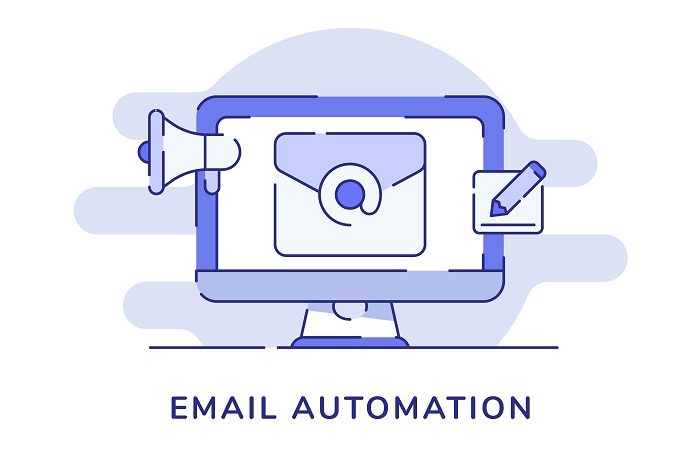The painful truth for a lot of marketers is that leads do not always convert into sales. In fact, Brian Carroll, in his book ‘Lead Generation for the Complex Sale’ (2006) states that 80% of leads don’t convert into sales. Fast forward to 2018, and the situation still looks dire. LeadForesnsics states that in 2018, 50% of B2B companies find it a challenge to generate high-quality, sales-ready leads.
There is a big difference between B2B and B2C relationships. B2C is mostly about tapping the consumer’s emotions to convince them to make a purchase while B2C relationships are mostly based on logic. Essentially, businesses do not buy on impulse, unlike many B2C recipients. Also, B2B purchase decisions are based on multiple stakeholders whose interests all need to be considered. The B2B buying process, therefore, takes a lot longer.
Although this is an oversimplified take on the difference, it is basically correct. In reality, understanding the complexities of the B2B buyer journey is one of the most challenging aspects of strategic digital marketing. However, the more a B2B marketer can adeptly understand the B2B buyer journey the more successful their marketing campaign is likely to be.
In B2B, it is imperative for the seller to understand their customers’ needs and the logic behind their purchasing decision. As such, B2B marketing initiatives need to have an in-depth focus on the things that matter most to these B2B recipients, that is, money, time, and their other resources. The in-depth focus requires highly personalized relationships that are built through all stages of the sales funnel in a variety of ways including:
- Through multi-channel lead nurturing campaigns
- Through accurate audience segmentation
- Data-driven decision making
- Through personalized email etc
When a B2B marketer is overwhelmed by the number of leads that need personalized attention, the job can become a nightmare. Sending impersonal email blasts is not a worthy alternative for most B2B marketers because these emails are often ignored. There is, however, a solution to these challenges. Marketing Automation.
Table of Content
What is Marketing Automation?
Marketing automation introduces systems that offload repetitive tasks from the marketer by generating prescribed actions set off by specific triggers. Marketing automation allows marketers to streamline and measure a wide variety of marketing tasks and workflows to grow revenue and increase their operational efficiency.
For example, in email marketing, once customers subscribe to an email journey, they get a personalized automatic response without the marketer having to do much else after the initial set-up of the system.
Of course, B2B marketing automation goes beyond email marketing. It also encompasses Social platforms, Blog posts, Landing pages, Forms, Retargeting, Calls to action, CRM, Analytics and so on.
So, the next immediate question that is begging for an answer is, ‘how successful is marketing automation?’ Well, according to VB analyst, Andrew Jones, with marketing automation 80% of companies increase leads and 77% increase conversions.
That said, it is essential to understand that marketing automation is not a magical panacea for all B2B marketers’ challenges but rather an enabler for a long-term digital marketing strategy.
How the Automation Process Works
The marketing automation process varies in complexity depending on the tools and the strategy that you employ. However, below is a simplified version of how it works:
- The marketing automation platform provides a section of code that is placed in the back end of the marketer’s website.
- The code allows the marketer to identify the visitors that land on the website and collect data about them like, how they linked to the site, their actions, and behavior on the site, and details that they provide on the site.
- The data is collected by the marketing automation platform and is used to place visitors into larger, discrete groups based on their actions, engagement, geographical location, their position in the buyer’s journey, etc.
- Based on the data collected and based on when specific conditions are met, automatic triggers are used to lead the visitor into the immediate next step in their purchase journey. For example, an email with useful information is sent, a retargeting AD is delivered, etc.
Benefits of Marketing Automation
Marketing automation is beneficial in the following ways:
- More deals are closed since lead behavior is used to customize content (e.g., email content) to the buyer’s journey.
- Increases lead conversion translates to an improved ROI
- Leads can be retargeted to relevant content on the marketer’s different online properties, based on what they have consumed
- Leads are successfully nurtured since the right message is sent at the right time to move the lead through the sales funnel.
- Lead scoring is more effective because prospects qualify themselves as they consume content. Lead scoring allows the marketer to know how much personal attention the lead needs and how close they are to buying.
- A human mistake is virtually eliminated in intricate digital marketing campaigns.
- Marketing campaigns are always driven by relevant and actionable data.
Email Marketing Automation Workflows
Marketing automation and more specifically, B2B email marketing automation is not just about Lead nurturing campaigns to convert leads into customers. For example, once you have already converted a lead into a customer, you can upsell, encourage greater product adoption or make the customer a brand ambassador.
These different positions in the lead/customers journey define the different workflows that can be set up using a marketing automation platform.
Below are different email marketing automation examples based on workflows/campaigns you can set up in a marketing automation platform:
1. Content Topic Workflows
Create a workflow for every industry-related topic that you create content about. For example, if you sell audio equipment, your main content topics could be headphones, earbuds, microphones, Gaming headsets, office headsets, and wireless gear. You would then create specific email workflows for each topic triggered by viewed content or content downloaded
2. Subscriber Welcome Workflow
Once visitors subscribe to your website, click on specific links or fill in a form, this could trigger an immediate welcome email. In this email, you can thank them for the subscription or interest in the content, and you can remind them all that they will get from the subscription. You can also send them links to your best performing content articles.
3. Internal Sales Notification Workflow
If a visitor to your website goes to specific bottom-of-the-funnel pages such as a product page or price page, use this to trigger an internal email notification to your sales rep to update them on these high-value activities. Such information will connect your sales representatives to the best leads that are further along the sales funnel.
4. Customer Success Workflow
For example, ask your customers if they are interested in being featured in a success story. This workflow can be triggered by success metrics collected (e.g., Net Promoter Score, NPS)
5. Engagement Workflow
For example, if you notice low product engagement in your customer, you can send them email content to educate them on product features that they can take advantage of.
6. Additional Examples
- Upselling workflows triggered by past purchases
- Customer happiness workflow triggered by a ‘happiness’ score, e.g. willingness to recommend your product/service
- Purchase reminder triggered by purchase cycles
- Re-engagement workflow triggered by inactivity.
Bringing it all together: How to Get Started with Email Automation
For the sake of clarity, email marketing automation (through a marketing automation platform), as opposed to pure email marketing (through an email service provider) is quite different. With email marketing automation, you get a lot more than just sending emails to groups and tracking open rates/clicks as is done by a basic email service provider. With email automation, you can create email workflows and track them based on triggers and other analytics.
Creating marketing automation workflows can be complicated. As mentioned earlier, understanding the complexities of the B2B buyer journey so that you can create the right workflows for your business is not easy.
That said, the solution as with most things is to start simple and iterate over time as you fine-tune your process based on data-driven decision making. Most marketing automation platforms start you off on simple templates and out of the box settings. Simply start with these once you have chosen the right platform and then employ Kaizen (constant and never-ending improvement) to the process.
Here is a summary of the things to pay attention to when getting started with email automation:
- Understand the difference between B2B and B2C and more specifically the nuances of the buyer’s journey for your customers.
- Understand the utility of marketing automation in the scope of your overall digital marketing strategy
- Choose the right marketing automation tool based on your digital marketing strategy and understand the marketing automation process
- Define campaign objectives and KPIs
- Understand the challenges and leverage all the benefits of the marketing automation platform
- Refine your email marketing workflows based on your digital marketing strategy and the data you are receiving from your analytics
- Identify gaps and solve them. For example, re-engage and reactivate audiences based on your new data, refined marketing automation processes and dynamic content









